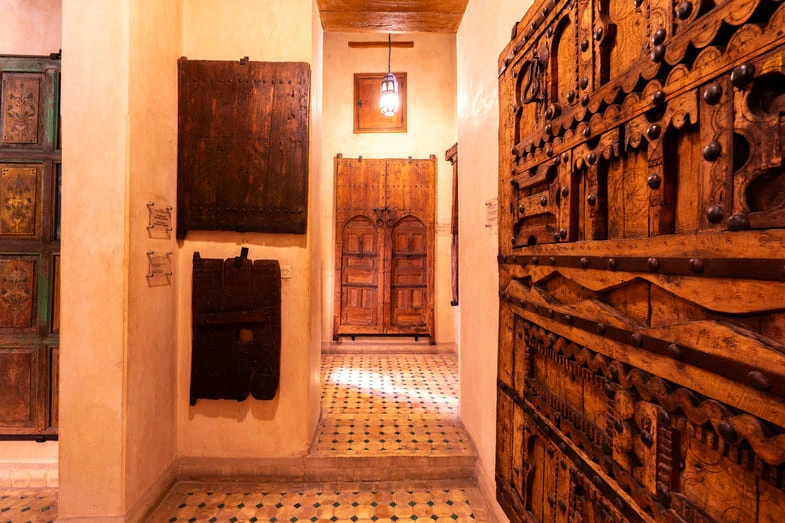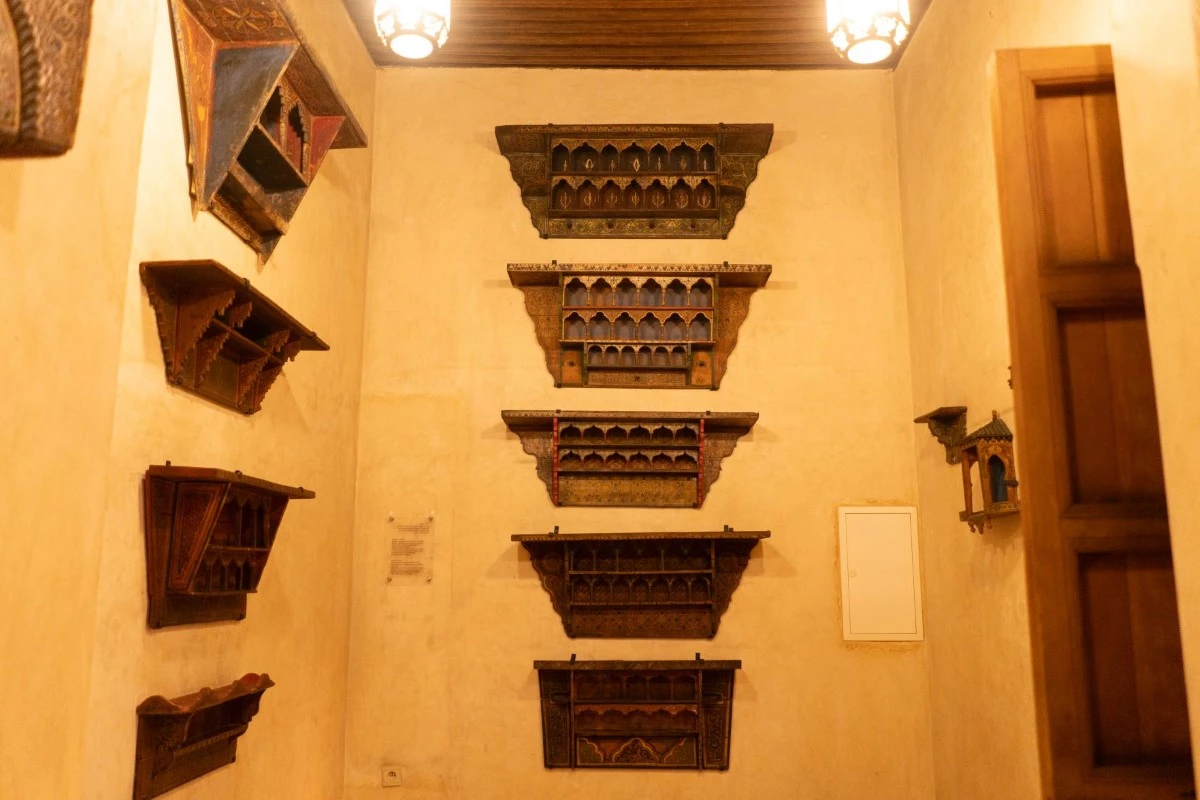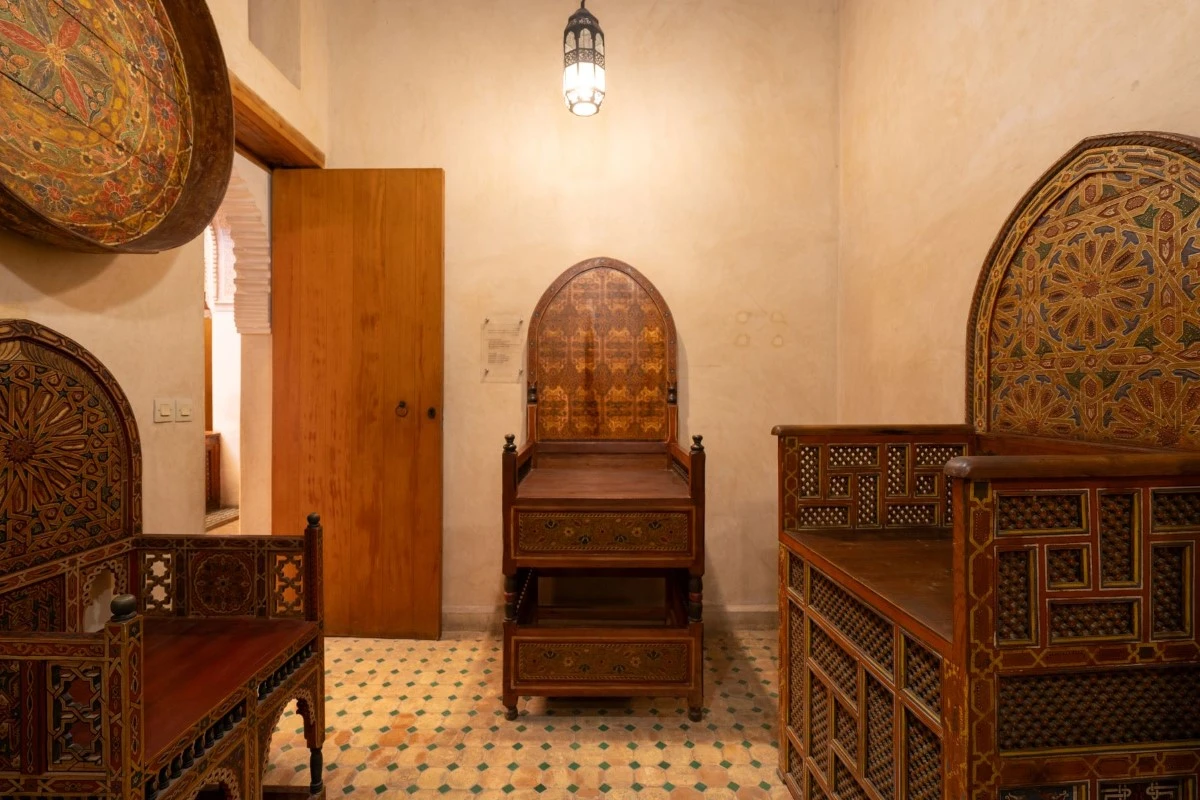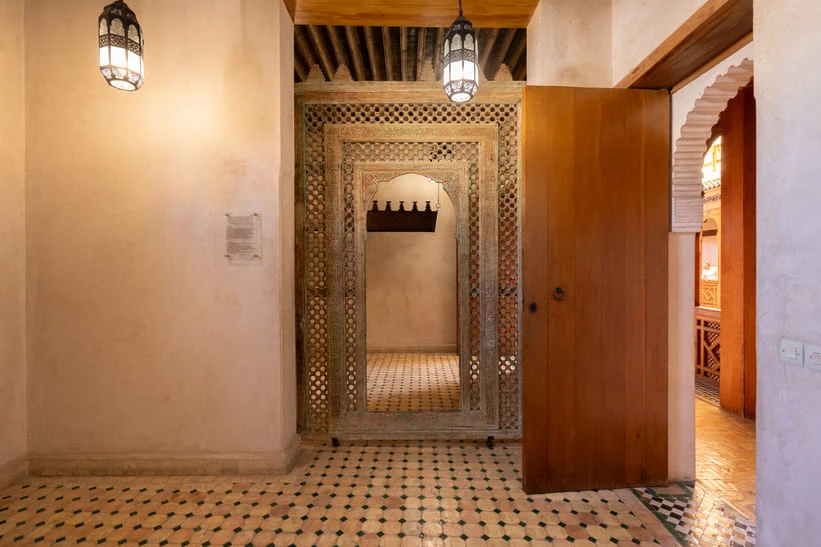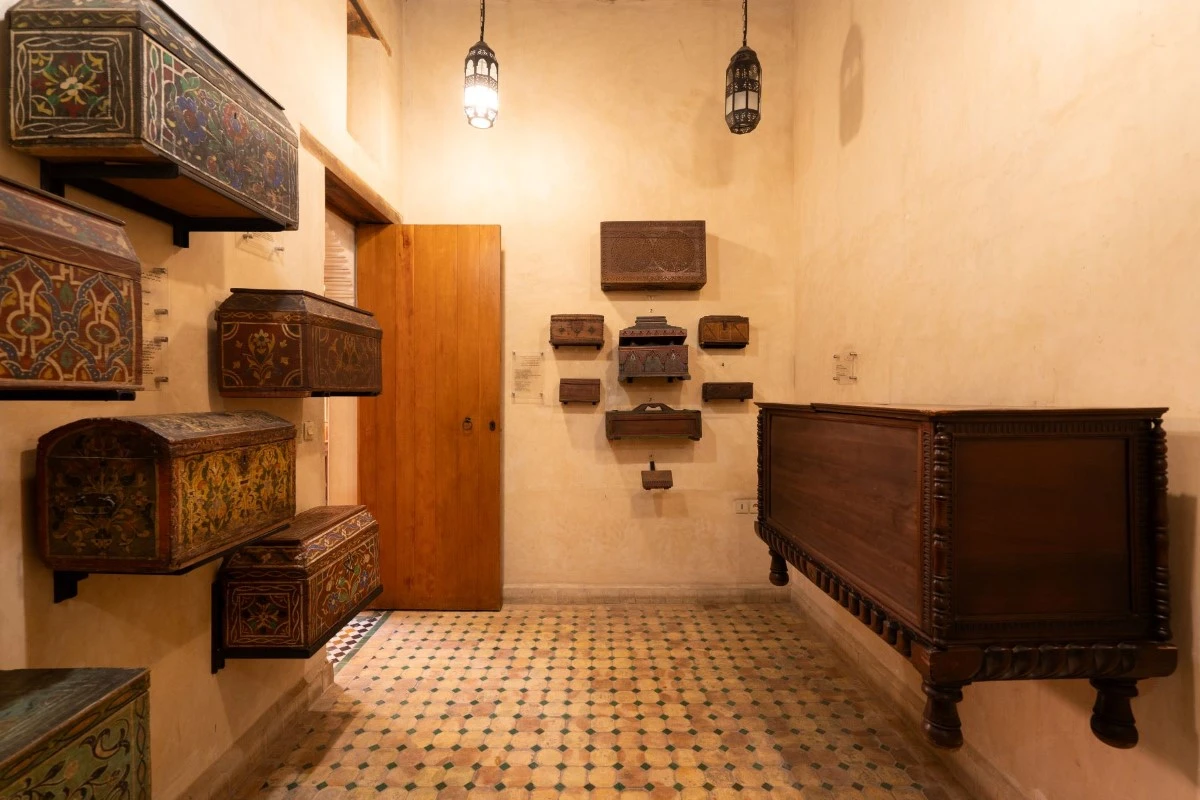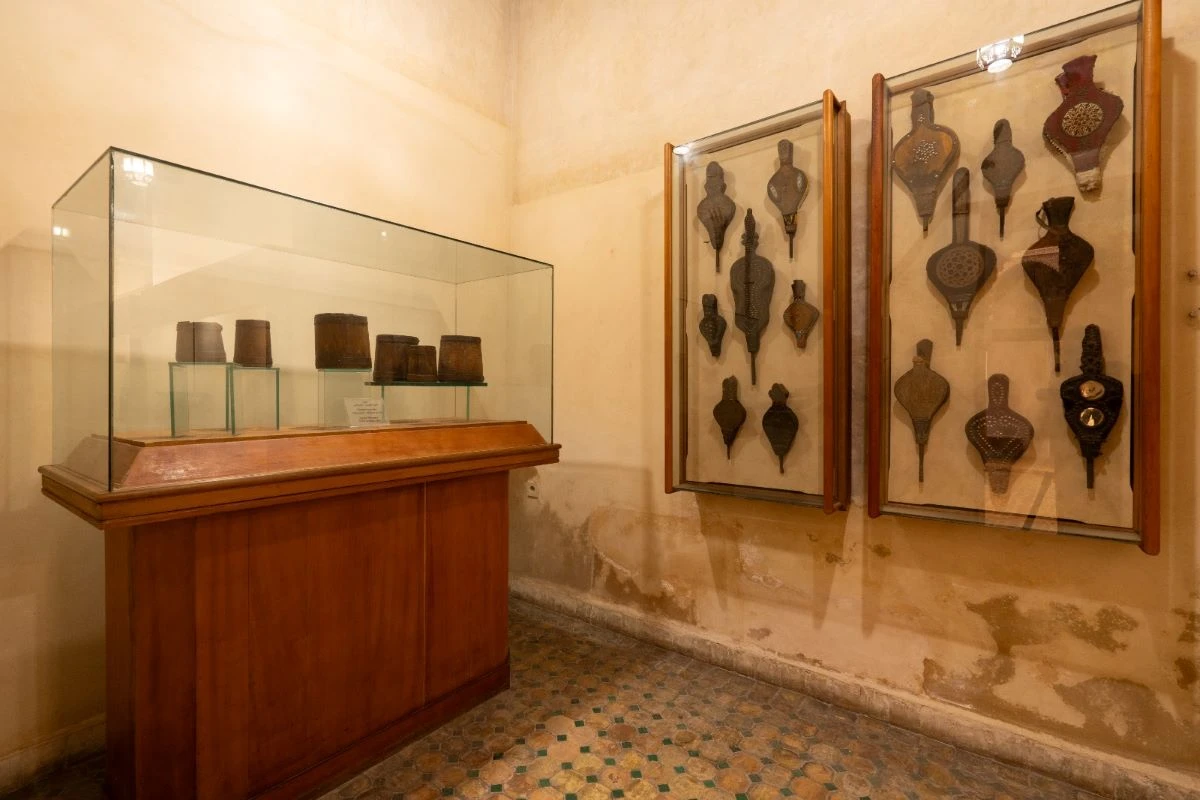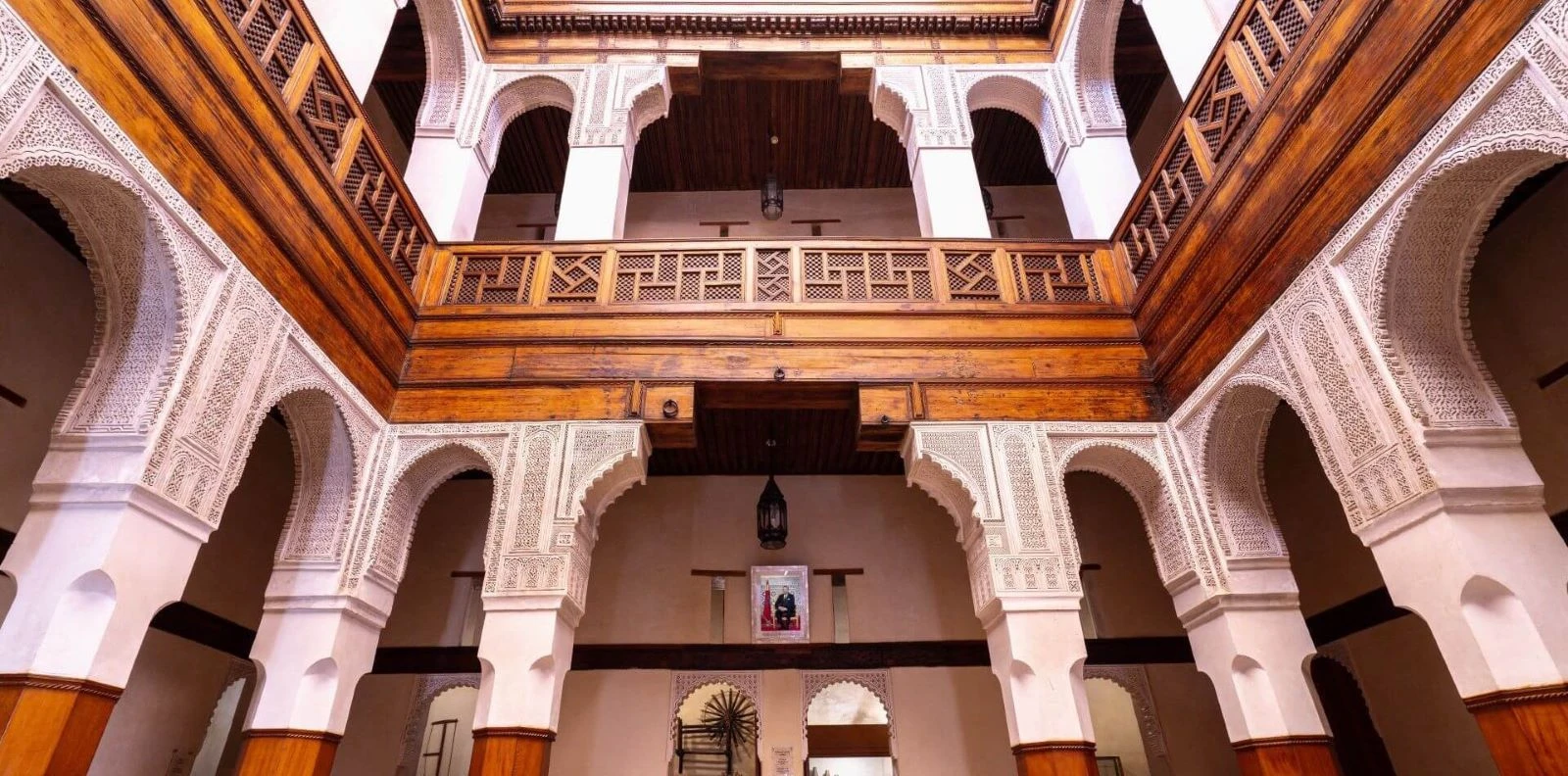
Nejjarîn Museum of Arts
and Woodworking
At its 1976 session in Nairobi, UNESCO’s General Conference adopted a resolution making the safeguarding of the city of Fez a duty incumbent on all humanity.
Nejjarîn Museum
At its 1976 session in Nairobi, UNESCO’s General Conference adopted a resolution making the safeguarding of the city of Fez a duty incumbent on all humanity.
In His Royal letter addressed to the Government, HIS MAJESTY KING HASSAN II made this objective a priority and set the example Himself by taking charge of the restoration of the prestigious Médersa Messbahya located in the ancient Medina, thus inaugurating private and public, national and international support for the process of rehabilitating various monuments and sites in the city of Fez.
It is within this framework and on the initiative of the Fès-Saliss Association, the Ministry of the Interior and the Local Authorities of the city of Fès that Mohammed Karim Lamrani has decided to finance the restoration of the Nejjarine Ensemble, comprising the fondouk, the square, the fountain and the carpenters’ mall.
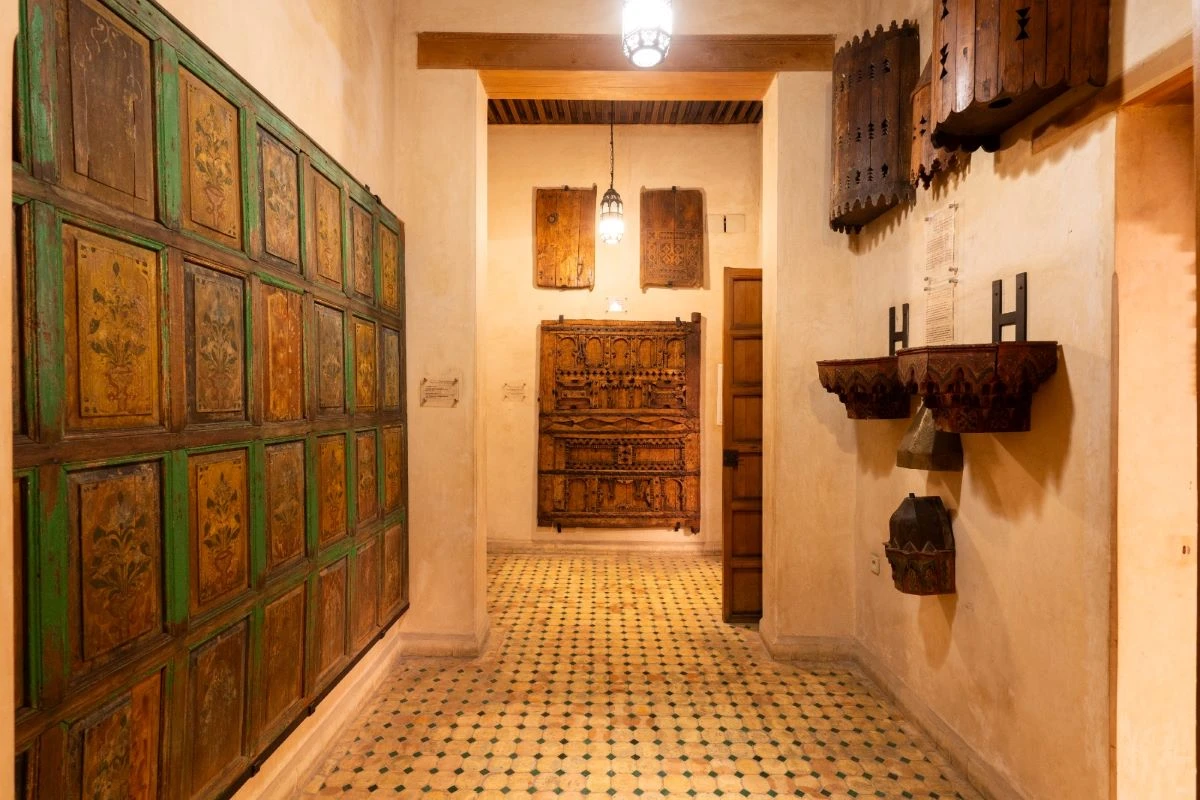
According to Moroccan historian Al Naciri, the magnificent building was erected by Sultan Moulay Ismail in 1711 and comprises three levels and fifty-one rooms. Originally, it served primarily as a commercial center and warehouse for precious goods belonging to the Makhzen.
Classified as a historic monument in 1916, it became a police station under the Protectorate in the 1940s. The foundations, ceilings, floors and walls began to deteriorate dangerously and the decorations threatened to disappear.
Over time, a complete restoration became necessary. Begun in 1990 by a multi-disciplinary committee, the work covered the entire site: the fondouk itself, but also the square, the fountain, the mosque, the carpenters’ mall and the dwellings above the stores on this mall. Work was completed in October 1996.
The budget for restoring and setting up the museum amounts to 18 million Dirhams, in payment terms.
Completely restored, this ensemble, a benchmark of the Kingdom of Morocco’s architectural and urban heritage, is now enjoying a new lease of life: it houses a Museum of Wooden Arts and Crafts managed by the Mohammed Karim Lamrani Foundation for the Nejjarine Ensemble.
This project, the result of a partnership between several ministries and the Mohammed Karim Lamrani Foundation for the Nejjarine Ensemble, aims to safeguard the memory of traditional woodworking skills and bear witness to Morocco’s history through the art of wood.
Inaugurated on May 23 1998, the museum houses woodworking tools and collections of antique and contemporary joinery and cabinetry.
The design optimized conservation imperatives and the constraints of creating a museum.
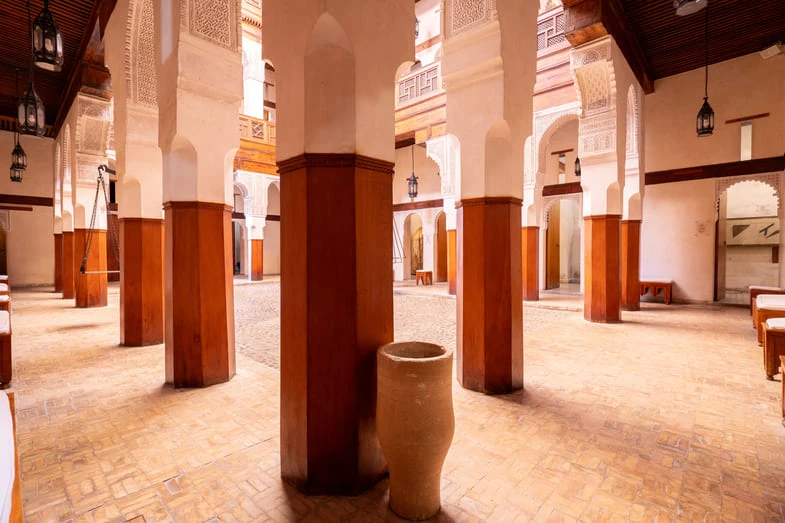
The term "Nejjarine", evocative of the surrounding craft activities, the olfactory context of the cedar wood crafted by local artisans and the strong presence of wood in the architecture of the fondouk were all factors in the choice of a museum dedicated to the arts and crafts of wood.
In the past, it was an essential part of our daily domestic life, but it has also been used for architecture, interior decoration and furniture in both our religious buildings and our homes; it has been used to carve our musical instruments as well as the butts of our rifles and the handles of our daggers.
As the primary medium for transcribing legal acts and learning the Koran, wood can be used to read the entire history of Moroccan civilization.



